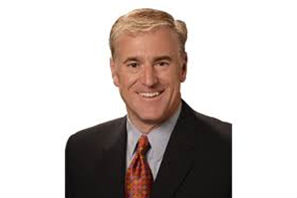Following the launch of Hayward Pool Product’s parent company into the stock market, PSN talked with CEO Keith Holleran about the development and what it means — not only for the company but the industry as well.
When did Hayward decide to become publicly traded and why?
When I joined the company in mid-2019, this was always the aspiration that I had with our financial sponsors. That was always t hope. Then last year, we decided.
It’s primarily given the overarching trend and the demand profile that the industry is experiencing. I think this makes good sense for us to step into the public markets now to be able to use some of the proceeds to pay down debt, improve our financial flexibility and to give me and the leadership team some optionality to address some topline growth opportunities that we aspire to.
-
Hayward Pool Products Set to Become Publicly Traded
Find out what is known about the firm's upcoming listing in the stock market.

What kinds of growth opportunities is Hayward pursuing?
I think it’s a combination of both organic and inorganic opportunities.
First and foremost we’re a product company, so ultimately our success hinges on how competitive is our product offering. We have a complete, competitive product line. But a lot of effort is going in now around product leadership.
Where we really want to assert ourselves from an industry standpoint is an area receiving a lot of attention — environmental sustainability, specifically energy efficiency and water conservation. But then we also have a keen eye to advance our leadership position around automation and controls, specifically … through our smart control, the Omni app. That’s really what’s driving our organic growth.
Then we have aspirations on the inorganic or merger-and-acquisitions side. We have aspirations to do some tuck-ins around our already complete line, but there are always opportunities.
On the product side, we believe that there are some categories where, if you have a leadership position, they create a halo around some of the other pieces of equipment on the pad. So we do place some disproportionate resources and interest around some products, without getting into specifics. But we don’t look at all products through the exact same lens. That doesn’t mean that we’re going to turn a blind eye to the other products by any means, but I think there are some product decisions that really lead the overarching decision that the builder or servicer or that the homeowner makes.
And we’re starting to take a broader look through the automation lens. Is there anything else in the broader backyard that we can maybe expand into beyond just the body of water? We’re starting to expand our view a little bit and see what strengths we have and what we can bring to maybe a broader investment platform.
Geographically, is Hayward looking to compete with some of the larger global companies?
We are looking to grow internationally. We hold 30% share in North America, but we’re not in that same strong position in Europe and the rest of the world. So we certainly have ambitions and, I think very good plans in place for us to start growing faster in those markets.
With Hayward’s IPO, all the “Big 3” manufacturers, plus our major distributor, are public. What does this indicate about the current state of the industry and the industry’s future?
I think it’s all wonderful. I think it’s going to attract a lot more attention and investment into our space — and enable us to innovate and move even faster as an industry.
Talking with the investors, there was an education that went on about our revenue profile and how much the aftermarket drives our overall revenue — 75% is directly tied to the repair, replacement, upgrade and remodeling revenue. I think most investors thought that new construction is really where our fortunes were hung. That felt like it was a bit of an awakening or education point with investment community.
The aftermarket makes for a very reliable revenue stream. I think that’s the real strength of our company’s profile and will encourage investor confidence.
Our service industry is also starting to consolidate with several franchises and roll-ups. Do you think this is coming from the same place that caused Hayward to go public, or does this mean something else?
I think it’s the former. The industry has great structure to it, it’s very well-defined. I think those create some dynamics that attract external investment in general. There’s nice profitability, there’s nice innovation in our industry, and I think that’s always going to attract some outside investment dollars.


